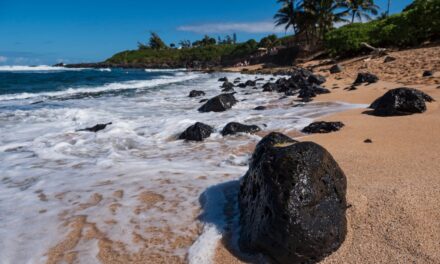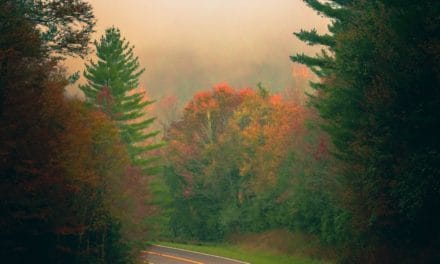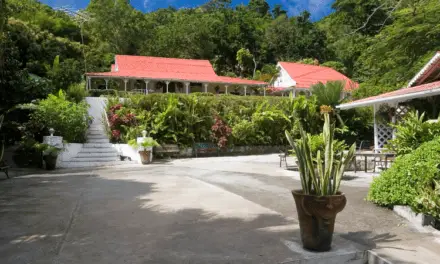Hawaii is known for its mildly-tropical climate. While many people dream of vacationing on a tropical island, some worry about the amount of rainfall in this type of climate. If you want to avoid rainfall on your trip to Hawaii, you may wonder when it rains the least on these pacific islands.
Hawaii receives the least amount of rain in its dry summer season. Hawaii’s dry season starts in May and goes through October. While Hawaii’s rain patterns can sometimes be unpredictable, it is safe to suggest that the dry season will live up to its name.
Below, we’ll discuss more about when you can expect the least amount of rainfall in Hawaii. Keep reading to learn everything you need to know!
What Months Does It Rain the Least in Hawaii?
Hawaii’s rain patterns vary from island to island, but overall, the summer season sees much less rain than winter.
Hawaii’s dry season runs from May to October. Even when it does rain during these months, the rainfall is confined enough that finding a dry place to spend the day is simple.
If you want the lowest chance of facing a rain shower while in Hawaii, planning your trip during the summer months is ideal.
What Areas of Hawaii Get the Least Rain?
Some areas in Hawaii receive much more rain than the annual average, while others fall dramatically below the average.
This is because of the trade winds, which control rain patterns on the Hawaiian Islands.
Each Hawaiian island has a mountainous landscape. The windward side of these mountains gathers the moist wind, creating clouds that eventually release rain.
On the other hand, the leeward sides of the mountains are often dry.
If you’re researching places to stay in Hawaii and rain is one of your biggest concerns, look for areas on the leeward side.
When Should I Visit Hawaii?
If you ask a local Hawaiian, they may tell you there is no bad time to visit the islands. But, when it comes to travel, different people have different preferences.
If you want to avoid rainfall, visiting Hawaii during the dry summer months is better. The height of the tourism season occurs between June and July, and the hurricane season runs from July to September. For this reason, May or October is often the best time to plan your visit.
When planning your trip to Hawaii, there are a few things to consider in addition to expected rainfall. See the table below for all the important information about visiting Hawaii:
| Summer Months | Winter Months |
| Rainfall is less likely. | Rainfall is more likely. |
| There is heavy tourism between June and July. | There is heavy tourism between December and January. |
| Hurricane season lasts from July to September. | The weather is slightly cooler, but temperatures are nearly identical to summer. |
Hawaii’s driest month is June, meaning you’re least likely to get caught in the rain when you visit during this month.
If you are not worried about tourists in Hawaii during its busiest seasons, June is an ideal time to plan your trip.
May sees fewer tourists than other summer months, and there is a low chance of getting caught in a storm.
However, you may have to deal with water runoff from the wetter winter months.
The Weather Seasons in Hawaii
As we’ve discussed, summer is the best time to visit Hawaii.
You won’t have to deal with any rainstorms, and you’ll have no problem finding luaus to attend at the height of the tourism season!
Below, we’ll discuss more information on what to expect weather-wise when visiting Hawaii, whenever you plan your trip.
What Are Hawaiian Summers Like?
The driest stretch of the summer in Hawaii goes from June to late August or early September. Paired with the mild, tropical climate, these are ideal months to go to Hawaii.
Another thing to note is that most of the rainfall occurs at night in the lower, more inhabited areas of Hawaii.
This means you don’t need to worry too much about having your beach day ruined by a rainstorm.
What Are Hawaiian Winters Like?
Winter in Hawaii accounts for most of the rainfall in the area. While elevation greatly affects how much it rains, winter is wetter overall.
The wettest months in most areas of Hawaii are March and April. It is not uncommon to experience a bit more rainfall in these months than what can be expected in early summer.
Best Places to Visit in Hawaii
People visit Hawaii mainly because they spend their days lying in the sun, taking boat trips, and exploring the island.
For this reason, expected rainfall is a big factor people consider while planning where to stay during their trip.
Luckily, much of the life of Hawaii is located on these leeward sides, where rain is less prominent.
As you research places to stay in Hawaii, you will find that some of the best resorts and experiences are on the leeward side. These include:
- Aulani, a Disney Resort & Spa in O’ahu
- Volcano Rainforest Retreat on The Big Island
- Leeward Coast Dolphin and Snorkel Sail
These are all great, family-friendly attractions, and because of their locations, they receive very little rainfall — especially in the summer months!
Final Thoughts
Hawaii’s dry season starts in May and ends in October, with the driest month being June. If you want to avoid a rainy vacation, summer is the best time to visit.
Leeward sides of the Hawaiian Islands experience the least amount of rain throughout the year.
Choose a resort on the leeward side of a Hawaiian island between May and October for the best chance of a sunny vacation.





